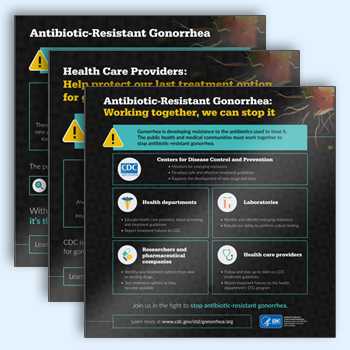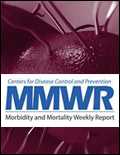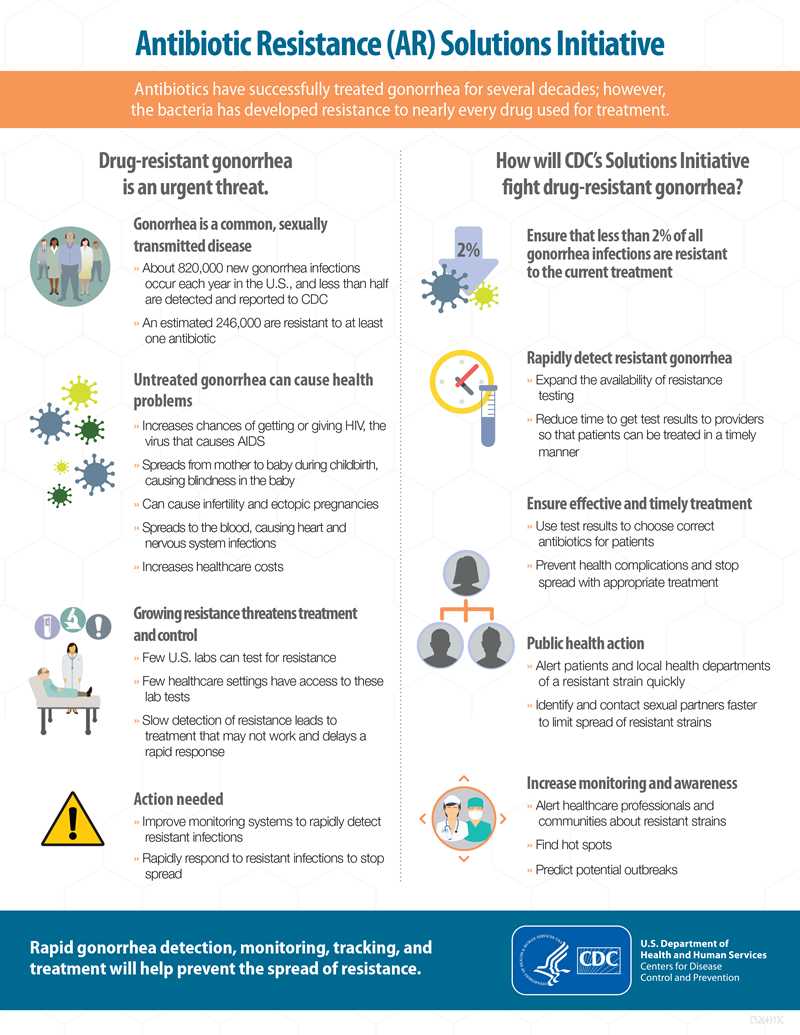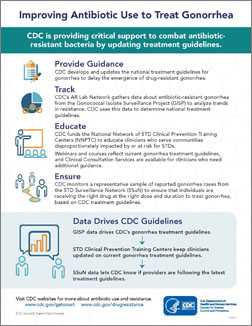Antibiotic-Resistant Gonorrhea
The emergence of multidrug- and cephalosporin-resistant gonorrhea in the United States would make gonorrhea much more difficult to treat.
Gonorrhea has progressively developed resistance to the antibiotic drugs prescribed to treat it. Following the spread of gonococcal fluoroquinolone resistance, the cephalosporin antibiotics have been the foundation of recommended treatment for gonorrhea. The emergence of cephalosporin-resistant gonorrhea would significantly complicate the ability of providers to treat gonorrhea successfully, since we have few antibiotic options left that are simple, well-studied, well-tolerated and highly effective. It is critical to continuously monitor antibiotic resistance in Neisseria gonorrhoeae and encourage research and development of new treatment regimens.
View Basic Information »
Data, trends, challenges, and lab information

Help spread the word with Antibiotic-Resistant Gonorrhea Infographics
Updates
Gonococcal Isolate Surveillance Project (GISP) Profiles 2015 (June 1, 2017)
AR Investment Map This interactive tool shows CDC’s key investments to combat antibiotic resistance (AR), including resistant gonorrhea, across the nation.
Blog by NCHHSTP Director: What Healthcare Providers Can Do to Slow Gonorrhea’s Growing Resistance to First-line Antibiotics
Combating the Threat of Antibiotic-Resistant Gonorrhea (August 1, 2016)

Neisseria gonorrhoeae Antimicrobial Susceptibility Surveillance – The Gonococcal Isolate Surveillance Project, 27 Sites, United States, 2014 MMWR July 14, 2016
2015 STD Treatment Guidelines – Gonococcal Infections (June 4, 2015)
Genomic sequencing of Neisseria gonorrhoeae to respond to the urgent threat of antimicrobial-resistant gonorrhea – an Advanced Molecular Detection (AMD) project (October 22, 2014)
Recommendations for the Laboratory-Based Detection of Chlamydia trachomatis and Neisseria gonorrhoeae — 2014 (March 14, 2014)
Antibiotic Resistance Threats in the United States 2013 – CDC report outlines core actions to halt drug resistance. (September 16, 2013)
- Page last reviewed: November 15, 2013
- Page last updated: July 26, 2017
- Content source:


 ShareCompartir
ShareCompartir


